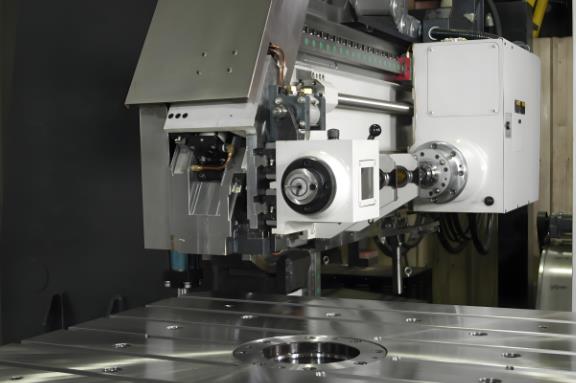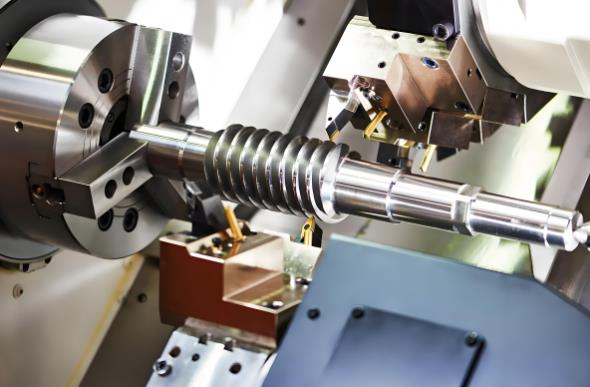CNC Boring: An In-Depth Exploration from Principles to Precision Applications
When we think about hole-making in manufacturing, we often focus on drilling. However, there’s another crucial process after drilling, which involves transforming a rough hole into one that ensures functionality and reliability. This process is CNC boring— a technique that’s complex, often underestimated, but essential in many high-stakes industries.
Unveiling the Mystery of "Boring"
In simple terms, CNC boring is the process of using a computer-controlled single-point cutting tool to precisely finish an existing hole. These holes, often referred to as "rough" or "pilot" holes, serve as the starting point to achieve a high level of precision and geometric accuracy.

Drilling vs. Boring: Two Completely Different Concepts
-
Drilling: Drilling is about removing material to form the initial hole. However, this process faces some challenges, such as tool deflection, wear, and vibration. The focus is generally on speed, which often limits achievable tolerances.
-
Boring: Boring, on the other hand, is a finishing process that focuses on perfection. Its goal is to transform the rough hole into a precise feature, achieving strict tolerances, excellent surface finish, and exact geometries. While slower, it offers higher precision, using a single-point tool and a controlled path.

Why Do We Need a "Pilot Hole"?
Before CNC boring can occur, an initial hole is necessary—this "rough" hole is drilled beforehand. It’s essential because CNC boring fine-tunes the dimensions of these pre-existing holes to exact specifications, ensuring high precision.
How CNC Boring Achieves Precision
Machine Requirements: CNC boring requires machines with high rigidity, damping capacity, and thermal stability. Large castings, linear guides, and temperature control systems are critical. The multi-axis capability (such as the 4th and 5th axes) is crucial for machining complex angled holes.
Tools: Precision depends on the tool itself. Boring bars are typically made from vibration-dampening materials like carbide or heavy metals. These tools have a long length-to-diameter ratio and incorporate damping technologies like tuned mass dampers to minimize vibration during the cutting process.
Tool Inserts: The geometry of the inserts, such as the cutting edge, rake angle, and tip radius, influences the cutting process. Advanced coatings such as TiAlN, AlCrN, or diamond coatings enhance tool life and cutting performance. The insert geometry affects not only material removal but also surface finish and chip control.
Fine-Tuning Mechanisms: To achieve micron-level precision, fine-tuning is necessary, and both mechanical and electronic systems play a role. These systems adjust the tool's movement to achieve the required precision.
The CNC Machine — Perfect Coordination
CNC boring is more than just feeding data into the machine; it’s about coordination. The "brain" of the machine coordinates complex tool paths, going beyond simple linear interpolation. Oscillating paths help suppress vibrations, while adaptive peck drilling cycles efficiently handle deep holes. The machine uses real-time feedback systems such as contact probes, laser scanners, and cameras to ensure continuous measurement and correction.
Advantages of CNC Boring
-
Strict Tolerances: CNC boring can achieve tolerances as tight as IT5/IT6, measured in microns. Unlike drilling or standard milling, it can provide high concentricity, cylindricity, and straightness—often exceeding what these other processes can achieve.
-
Superior Surface Finish: The surface roughness (Ra) of CNC boring is less than 0.4 microns (16 microinches), which is crucial for applications such as sealing surfaces, bearing fits, and fluid dynamics.
-
Geometric Versatility: CNC boring can process a wide range of hole shapes, including straight, conical, stepped, and interrupted internal profiles. Whether it’s a blind hole or through-hole, CNC boring excels at machining complex geometries.
-
Mass Consistency: The real advantage of CNC boring lies in its repeatability. It can produce thousands of parts with identical quality, ensuring consistent precision in mass production.
-
Material Versatility: CNC boring performs exceptionally well when working with tough-to-machine materials, such as Inconel, titanium alloys, or composite materials. Unlike drilling, which often struggles with these materials, CNC boring delivers consistent results even with high-strength alloys.
Practical Industry Applications
-
Aerospace: CNC boring plays a vital role in machining engine cylinders, turbine shafts, landing gear ear axles, and actuator housings. These parts often experience extreme loads and temperatures, requiring precise dimensions for reliable performance.
-
Automotive & Motorsports: Engine blocks, cylinder heads, gearbox housings, and precision hydraulic valve bodies all require CNC boring. The process ensures parts meet performance demands under high-stress conditions.
-
Medical Devices: Titanium spinal fusion devices, prosthetic joints, and surgical instrument holes require CNC boring due to its ability to meet biocompatibility standards and defect-free production.
-
Hydraulics & Pneumatics: Valve core holes, pump housings, and cylinder tubes often require CNC boring to ensure perfect sealing and performance under pressure.
-
Energy: Precision boring in turbine components, oil and gas valve bodies, and nuclear applications ensures parts can withstand harsh operating environments.
When is CNC Boring Justified?
While CNC boring offers high precision, it comes at a cost. It’s slower than drilling, and each operation is more expensive. However, it’s invaluable when extremely precise parts are needed. If the boring is critical for part fit, function, sealing, or safety, then CNC boring is likely the best choice. If the hole is just a simple pass-through, drilling is usually sufficient.
Cost vs. Value: CNC boring is worth the cost when the demand for precision outweighs the price. It consistently produces parts with tight tolerances, perfect surfaces, and complex geometries, making it indispensable in certain applications.
The Art of Perfect Boring
CNC boring is more than just making a hole; it’s about perfecting that hole. It transforms a rough hole into a precise, functional feature that meets strict quality and performance standards. Whether you’re in aerospace, automotive, medical, or energy sectors, CNC boring is a silent yet crucial contributor to the performance, reliability, and safety of critical components.
Call to Action:
Need more than just a hole? Discover how Rapid Model uses advanced CNC boring technology to meet your precision requirements for critical features. Our skilled machinists and multi-axis capabilities ensure your internal dimensions meet the tightest tolerances and finest surface finishes.

